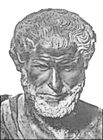A Critical Analysis of Florence Nightingale:
 |
| Lytton Strachey |
The
present text is a part of the famous book
Eminent
Victorians (1918) written by Lytton Strachey. Strachey was one of the
influential members of Bloomsbury Group, a loosely associated group of English
writers,
intellectuals, philosophers and artists who
shared and propagated a common view of life in the early 20th
century England. They stood apart from the conventional norms, bourgeois
values and Victorian morality and adopted a more liberal way of life with a
focus on personal relationships and individual pleasure. As a member of this society, Lytton Strachey,
a biographer and literary critic, took an unconventional attitude to writing
biography. He revolutionized and even
deconstructed the concept as well as technique of writing biography in
Eminent Victorians. In November 1912 he
wrote to Virginia Woolf that their Victorian predecessors "seem to me a
set of mouth bungled hypocrites."
He
demystified several Victorian icons like Cardinal Manning, Florence Nightingale,
Thomas Arnold and General Gordon who were standing on the ivory tower of glory.
He stripped them of their aura associated with them to present a realistic
picture of their life with psychological realism. In the present essay on Florence Nightingale,
founder of modern nursing system, he shatters the romantic and ideal concept of
her life. He deflates the aura of this soft,
delicate, angelic lady known as the “lady with the lamp” with divine mercy and
grace as he says, “But the truth was different,” suggesting that the real woman
behind the popular imagination was quite different in real life. Strachey
begins his essay with a shocking remark upon Miss. Nightingale: “She
moved under the stress of an impetus which finds no place in popular
imagination. A demon possessed
her” (P.119). Later in the course of his writing Strachey clarifies its
meaning.
 |
| The Lady with the Lamp |
The
essay is divided in five parts each of which deals with different aspects of
her life from different perspectives. The
first passage focuses more upon Florence
Nightingale’s inward life, her character and mind. This passage also depicts
the earlier stages of her life when she was preparing herself to choose the
profession of a nurse. Born of a
well-to-do family, Florence Nightingale was brought up with all the advantages
of aristocratic life. While her sisters and cousins were busy in
dinner-parties, dances and finding suitable partner for marriage, her craving
was quite different. Strachey writes, “She would think of nothing but how to
satisfy that singular craving of hers to be doing something” (p.121). Her lovers had been to her “an added burden
and a mockery” (P.123). She was able brush aside all the allurements and
temptations of life with disdain and loathing. Thus she suppressed, according
to Strachey, “the most powerful and the profoundest of all the instincts of
humanity” (p.123). But the suppression of this powerful instinct transformed
her into a megalomaniac, autocratic, dominating lady with a strong and
persisting desire of “doing something.”
This also gave her energy to face and overcome numerous difficulties in
her profession as nursing was regarded as “a peculiarly disreputable” (p.121)
profession at that time.
The second passage describes Florence’s
activities in the Army hospital at Scutari. Upon arriving at Scutari she found
the hospital in a deplorable condition without the basic facilities needed for the
patients (p.120). She used her own
resources and connections to provide them with the basic facilities. Her
sympathy and affection touched the hearts of the patients and infused new hopes
into those who had lost their hopes in life.
Sometimes her efforts rescued those who had been considered as beyond
curable by the doctor. Soon she became
an idol mong the patients. Strachey writes: “A
passionate idolatry among the men: they kissed her shadow as it passed”(p.137). But there was other side of this delicate angelic lady which
was known to the surgeons and other staff working under her instruction in the
Scutari Hospital. Strachey writes: “Beneath
her cool and calm demeanour lurked fierce and passionate fires…the high deliberation in the scope of the capacious
brow, the sign of power in the dominating curve of the thin nose, and the traces of a harsh and dangerous temper –
something peevish,something mocking,
and yet something precise – the small and delicate mouth” (p.137). This is with her fierce dominating nature she brought order
out of chaos with strict method and stern discipline. After all days’ restraints
and reserve, she poured out all her pent up energies in writing letters and
which she filled with recommendations, suggestion and criticism at night. She
also used her suppressed energies to find the faults of her officials and
criticise them with fierce sarcasm and ridicule. Strachey writes: “…her
pen, in the virulence of its volubility, would rush on to the discussion of
individuals, to the denunciation
of an incompetent surgeon or the ridicule of self-sufficient nurse. Her sarcasm searched the ranks of the officials
with the deadly and unsparing precision of
a machine gun” (p.139). Strachey also mentioned that she respected none. Even her vituperation
descended upon her most well-wisher friend Sidney Herbert with whom she was
once engaged in temporary quarrel. After gaining much popularity Miss Nightingale
returned to England.
The third
passage deals with her activity in England.
Though she returned in a shattered state of health, she refused to take
rest as “a demonic frenzy had seized her.”
She had the plan of reforming the military hospitals and their sanitary system.
But she had to face the difficulties posed before her by her opponent like Dr.
Andrew Smith, the head of the Army Medical Department and Lord. Panmure. But she with her restless and indomitable
spirit ultimately triumphed over them. But the labour and effort needed was enormous
and it affected her health. But she
refused to take rest. Even she was
thinking of reforming Army Medical system in India. Strachey writes, “Her desire for work could
now be scarcely distinguished from mania” (p.158). When one of her well-wisher and friend Dr.
Sutherland urged her to take rest, she replied, “I am lying without my head,
without my claws, and you all peck at me” (p.158).
In the fourth
passage, Strachey sardonically portrays her adventure in the philosophic
and spiritual realm after her flawless victory in the physical world of action.
Strachey writes:
“She
sighed for more worlds to conquer –more, and yet more. She looked about her –
what was there left? Of course!
Philosophy! After the world of action, the world of thought” (p.169). She found many defects in the workings and teachings of the
church and tended to correct it with her suggestions. Her Suggestions
for Thought to the Searchers after Truth among the Artisans of England (1860)
unravels the difficulties …connected with such matters as Belief in God, the
plan of Creation, the origin of Evil etc. Strachey sardonically comments on her conception
of God: “…her
conception of God was certainly not orthodox. She felt towards Him as she might have felt towards a
glorified sanitary engineer…she seems hardly to distinguish between the Deity and the Drains”(p.171). His biting satire on Miss. Nightingale does not end with
this. He continues that if one reads few pages of her book he will get the
impression that “Miss Nightingale has got the Almighty too into her clutches,
and that, if He is not careful, she will kill Him with overwork.” (p.171) But
she was more comfortable in analysing and dissecting facts than in constructing
abstract coherent system of thought. She was an empiricist who believed in what
she saw. For her there was no such thing as “infection” as she had not seen it.
But she noticed the good effect of fresh air upon her patients. That’s why she always
insisted that the patients’ bedrooms should be well-ventilated. But according to Strachey it was “purely
empirical doctrine and thus it led to some unfortunate results” (p.172). Though she was unaware of the hot weather in
India, she recommended that “windows must be kept open all the year round” in
the hospitals. This almost shocked the authorities in India who opposed this
decision. But she stood firm in her position.
The final
passage depicts the last years of her life. In this period, she, according to Strachey,
was gradually being transformed from the “thin, angular woman, with her haughty
eye and her aerid mouth” (p.177) to a rounded fat lady smiling all day long.
Strachey writes, “The brain which had been steeled at Scutari was indeed,
literally, growing soft” (p.177).
-----------------------------------------
*
Text used :
Strachey, Lytton. Eminent Victorians. London: Chatto &
Windus, 1918. Print.









